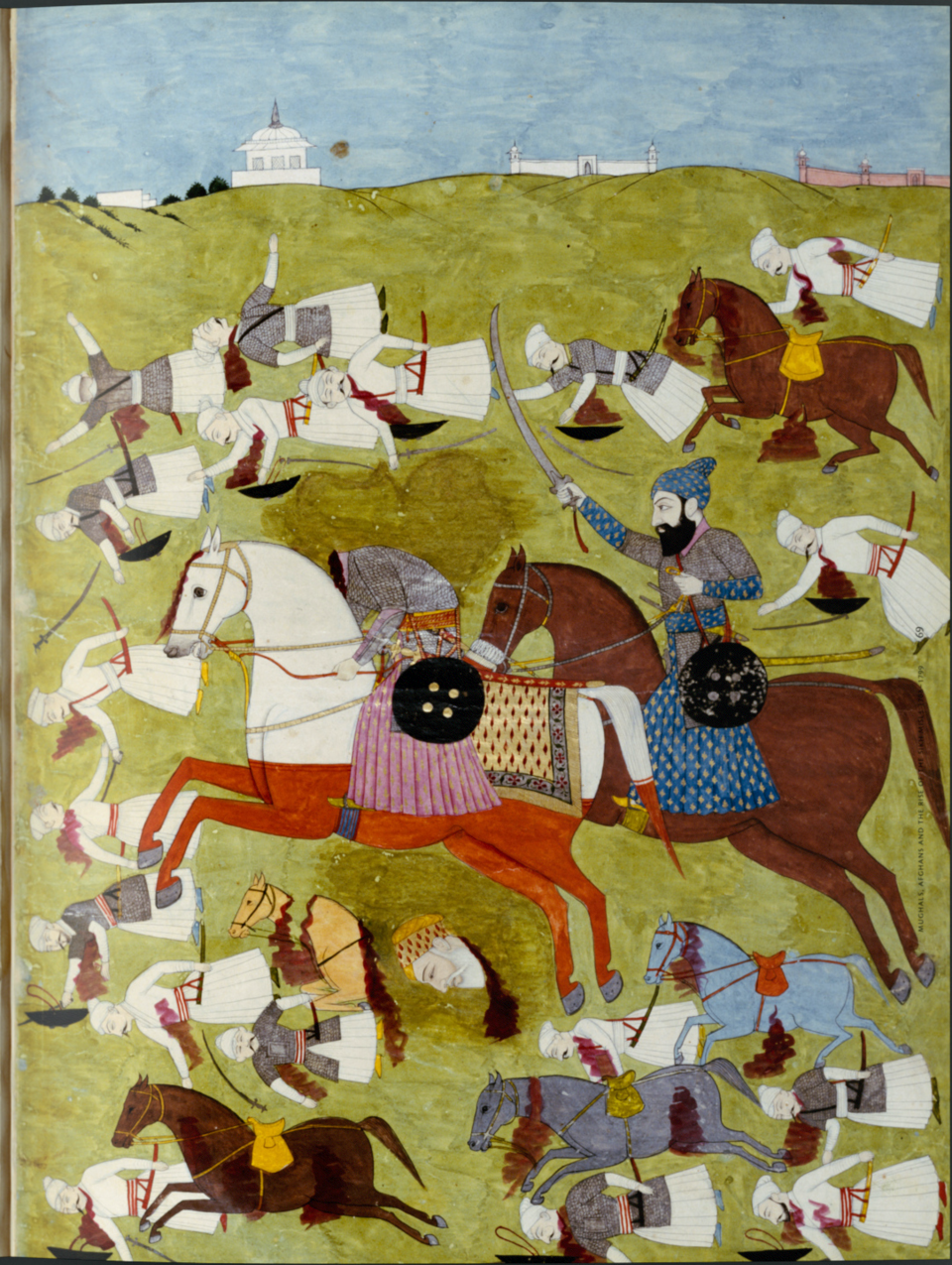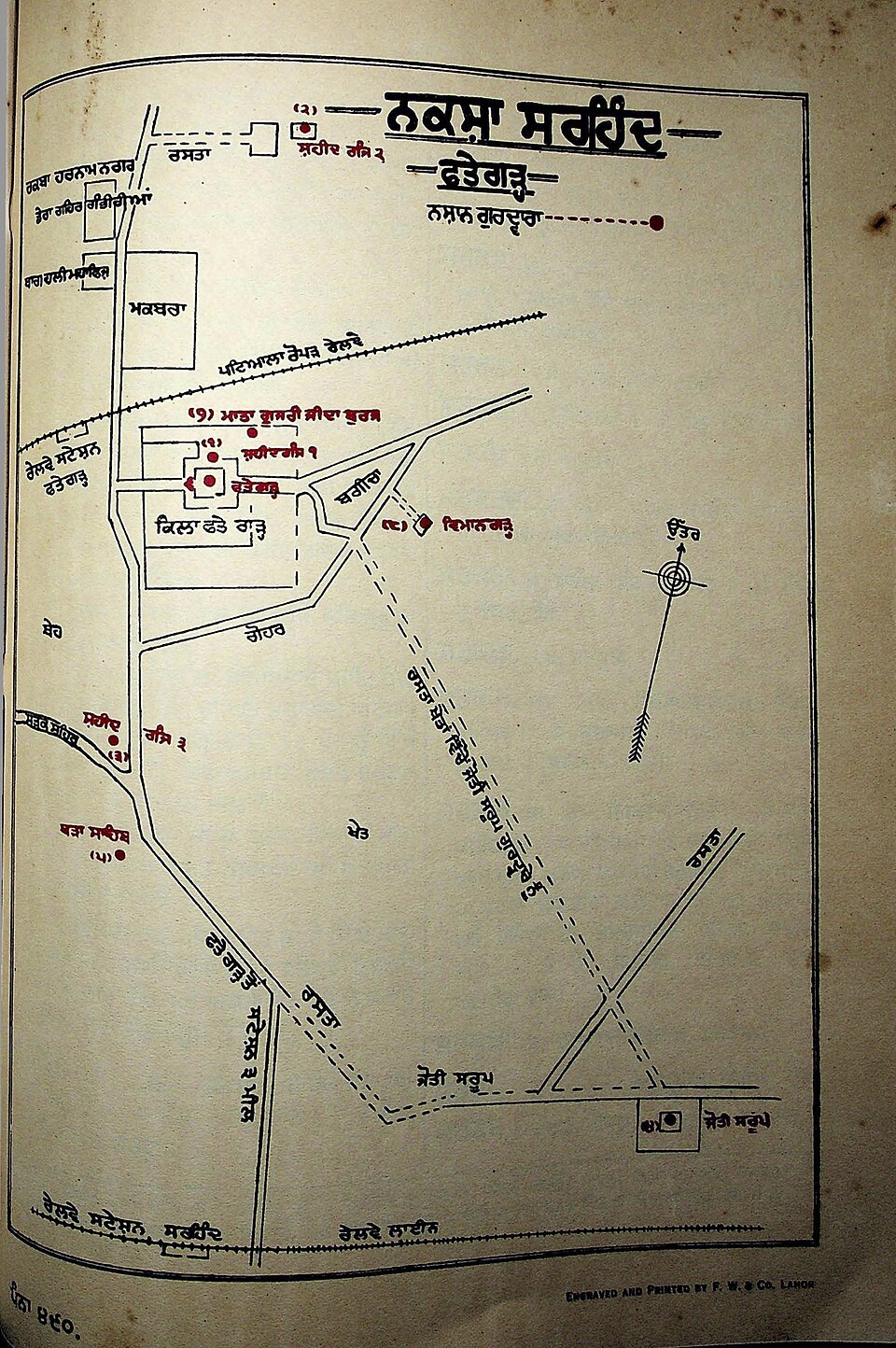OCR Specification focus:
‘conflicts with Sikhs; decline after 1707 and Aurangzeb’s responsibility’
Introduction
After Aurangzeb’s death in 1707, the Mughal Empire entered a period of severe instability. Conflicts with the Sikhs and ineffective leadership hastened imperial decline across India.
Conflicts with the Sikhs
Background of Sikh Resistance
The Sikh community, founded in the late fifteenth century by Guru Nanak, had developed into both a religious and military force by the seventeenth century. By the time of Aurangzeb, tensions between the Mughal state and the Sikhs intensified, especially after the execution of Guru Tegh Bahadur in 1675 for resisting forced conversions.
Sikh: A follower of Sikhism, a religion originating in the Punjab region combining spiritual devotion with emphasis on justice and resistance to oppression.
The martyrdom of Guru Tegh Bahadur inspired Sikh militarisation under his successor, Guru Gobind Singh, who founded the Khalsa in 1699. This was a brotherhood of the initiated that bound Sikhs to defend their faith and resist oppression.
Mughal-Sikh Conflicts
Aurangzeb’s policies of persecution, coupled with expansionist campaigns, led to repeated clashes:
Khalsa resistance mobilised widespread Sikh communities in Punjab.
Guru Gobind Singh waged a guerrilla struggle against Mughal forces, exploiting terrain and local support.
After Aurangzeb’s death, Mughal authority weakened, allowing the Sikhs to consolidate power further.
The rise of Banda Singh Bahadur, a former disciple of Guru Gobind Singh, intensified Sikh rebellion after 1708.

Eighteenth-century folio showing Sikh (blue) and Mughal (white) forces at the Battle of Sirhind (1710). The scene conveys the intensity of the engagement that undermined Mughal authority in the Punjab. As artwork rather than a diagram, it complements—but does not replace—map-based spatial understanding. Source
He captured key territories such as Sirhind in 1710, challenging Mughal supremacy in the Punjab.

A high-resolution historical town plan of Sirhind with Sikh sites labelled (from Mahan Kosh, 1930). It pinpoints locations associated with Sikh heritage relevant to the 1710 campaign. Note: the map includes heritage and pilgrimage sites beyond the immediate conflict narrative. Source
The Mughals eventually executed Banda Singh Bahadur in 1716, but the Sikh movement remained resilient and continued to undermine Mughal control.
Decline after 1707
The Problem of Succession
Aurangzeb’s death in 1707 left the empire without a strong or universally accepted heir. His three sons—Muazzam (later Bahadur Shah I), Azam Shah, and Kam Bakhsh—contested the throne, sparking civil war. Muazzam emerged victorious but only after extensive bloodshed that weakened imperial resources.
Succession wars drained the treasury.
Provincial governors took advantage of imperial distraction to consolidate autonomy.
Mughal military prestige suffered, emboldening regional powers like the Sikhs, Marathas, and Rajputs.
Weak Leadership after Aurangzeb
Following Bahadur Shah I’s short reign (1707–1712), a rapid succession of weak emperors followed:
Jahandar Shah (1712–1713) relied heavily on his courtier Zulfikar Khan, undermining royal authority.
Farrukhsiyar (1713–1719) came to power with the backing of the Sayyid brothers, often called the "kingmakers", highlighting imperial dependence on court factions.
Political instability encouraged decentralisation of power, and provincial leaders like the Nizam of Hyderabad and Nawabs of Bengal operated with near independence.
The Role of Revenue Decline
Aurangzeb’s long wars in the Deccan and policies of religious discrimination strained the empire’s finances:
Over-taxation alienated peasants, reducing agricultural productivity.
Expensive campaigns left the treasury depleted.
Disruption of trade routes due to Sikh and Maratha uprisings curtailed revenue collection.
The weakening of the central financial system meant emperors could no longer maintain effective armies or assert authority across India.
Aurangzeb’s Responsibility
Religious Policies and Their Impact
Aurangzeb’s reign marked a significant departure from the relatively tolerant approach of earlier emperors like Akbar. His re-imposition of the jizya tax on non-Muslims and destruction of some Hindu temples alienated broad sections of the population.
Jizya: A tax imposed on non-Muslims under Islamic law, reinstated by Aurangzeb in 1679 after having been abolished by Akbar.
His confrontational stance toward Sikhs, Rajputs, and Marathas provoked long-lasting resistance, weakening Mughal cohesion.
Prolonged Military Campaigns
Aurangzeb’s Deccan campaigns (1658–1707) drained imperial resources. While initially aimed at extending Mughal authority over the Deccan sultanates, these wars prolonged conflicts with the Marathas and left the empire exhausted. His fixation on conquest in the south left northern frontiers, including Punjab, vulnerable to Sikh resurgence.
Administrative Consequences
Aurangzeb’s centralised administration failed to adapt to the growing size of the empire:
Excessive delegation to jagirdars (landholders granted revenue rights) encouraged corruption.
Increasing disputes between jagirdars and zamindars (local landholders) destabilised rural society.
Lack of reforms left Mughal bureaucracy outdated and incapable of managing a vast, diverse empire.
Responsibility for Post-1707 Decline
Historians debate whether Aurangzeb’s policies directly caused the empire’s decline or merely accelerated inevitable fragmentation. However, his authoritarianism, religious orthodoxy, and costly wars undeniably weakened imperial structures, leaving successors unable to restore stability. The Sikh conflicts after 1707 were thus partly rooted in long-standing grievances nurtured under Aurangzeb’s rule.
FAQ
Banda Singh Bahadur introduced reforms that undermined Mughal dominance in Punjab. He redistributed land to peasants by confiscating estates of Mughal elites and landlords.
This reversal of the jagirdar system weakened Mughal control, as peasants gained loyalty to the Sikh cause. Banda also struck coins in the name of Sikh Gurus, symbolically rejecting Mughal sovereignty.
Although his brutal execution in 1716 temporarily halted large-scale Sikh uprisings, it did not eliminate Sikh resistance.
His death turned him into a martyr, inspiring later generations.
Sikh guerrilla bands reorganised after his fall.
Mughal reprisals only deepened hostility between the community and imperial rule.
The Punjab was a crucial frontier province:
It guarded approaches from Central Asia.
Its fertile lands provided vital agricultural revenue.
Control over Punjab secured trade and military routes to Kabul and Kashmir.
Losing influence here after Sikh uprisings was therefore a major strategic setback.
Unlike Aurangzeb’s harsher persecution, successors like Bahadur Shah I initially attempted negotiation with the Sikhs.
However, inconsistent strategies followed: at times conciliatory, but often reverting to military suppression. This inconsistency revealed imperial weakness and allowed Sikh power to grow.
The strain of suppressing Sikh uprisings intersected with other challenges:
Financial crisis worsened by Deccan wars.
Succession disputes among Aurangzeb’s heirs.
Maratha and Rajput resistance further drained resources.
Thus, Sikh conflicts amplified existing instability rather than being an isolated cause of decline.
Practice Questions
Question 1 (2 marks)
Name one Mughal emperor who ruled immediately after Aurangzeb’s death in 1707, and one significant opponent the empire faced in the Punjab during this period.
Mark scheme:
1 mark for correctly identifying Bahadur Shah I (or Muazzam).
1 mark for correctly identifying Banda Singh Bahadur (or Sikhs).
Question 2 (6 marks)
Explain two reasons why conflicts with the Sikhs contributed to the decline of the Mughal Empire after 1707.
Mark scheme:
Up to 3 marks per reason.
Marks awarded for clear explanation, not just identification.
Indicative content may include:
Sikh militarisation under the Khalsa and leadership of Banda Singh Bahadur (1 mark).
Capture of Sirhind in 1710 undermining Mughal authority in Punjab (1 mark).
Guerrilla tactics and popular support made it difficult for the Mughals to suppress Sikh resistance (1 mark).
The weakening of Mughal control in Punjab encouraged other regional powers to resist (1 mark).
Financial strain from constant military action against Sikhs added to imperial decline (1 mark).
Maximum 3 marks if only descriptive without explanation.
Maximum 6 marks if both reasons are well-developed with explanation.

